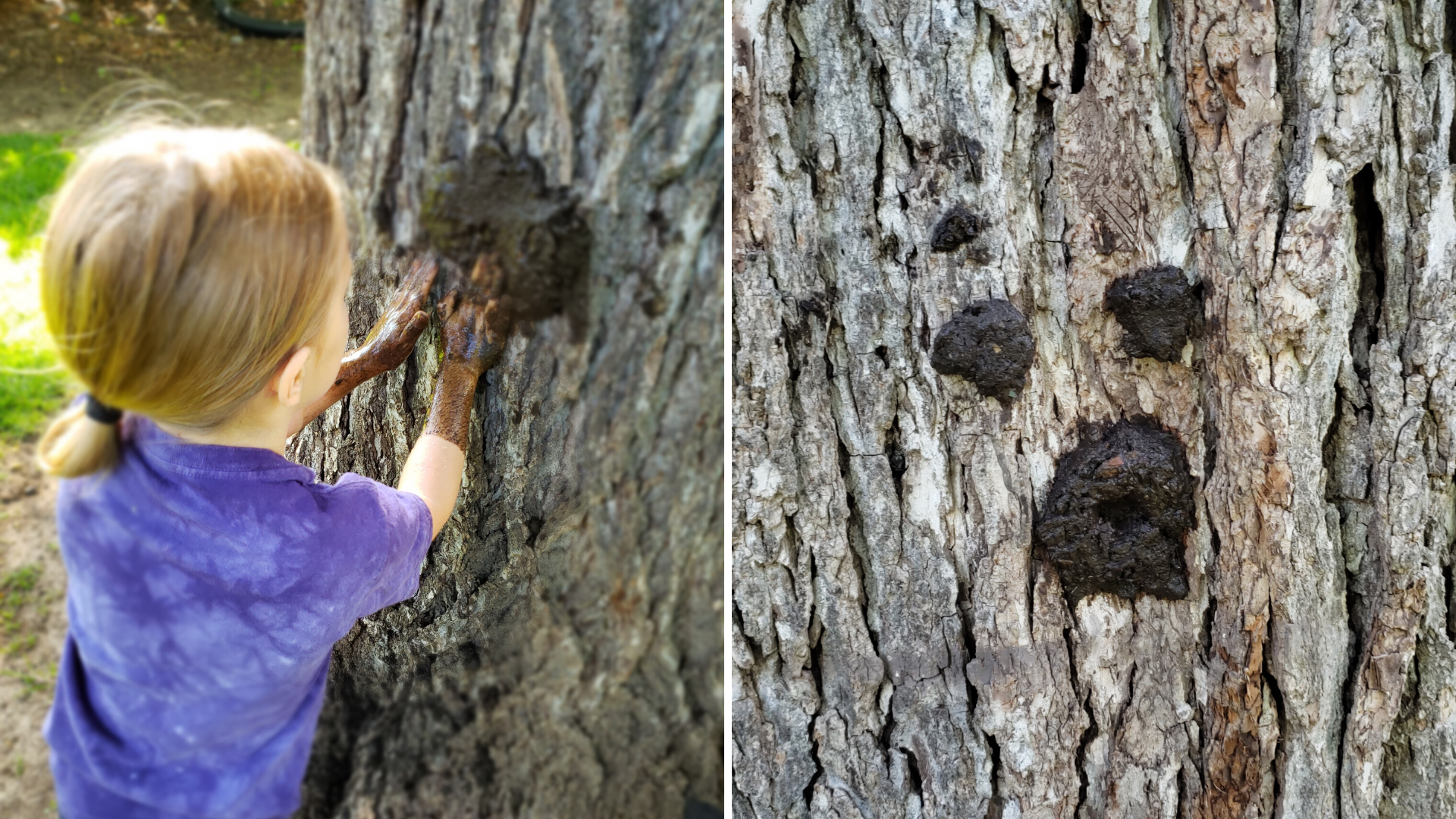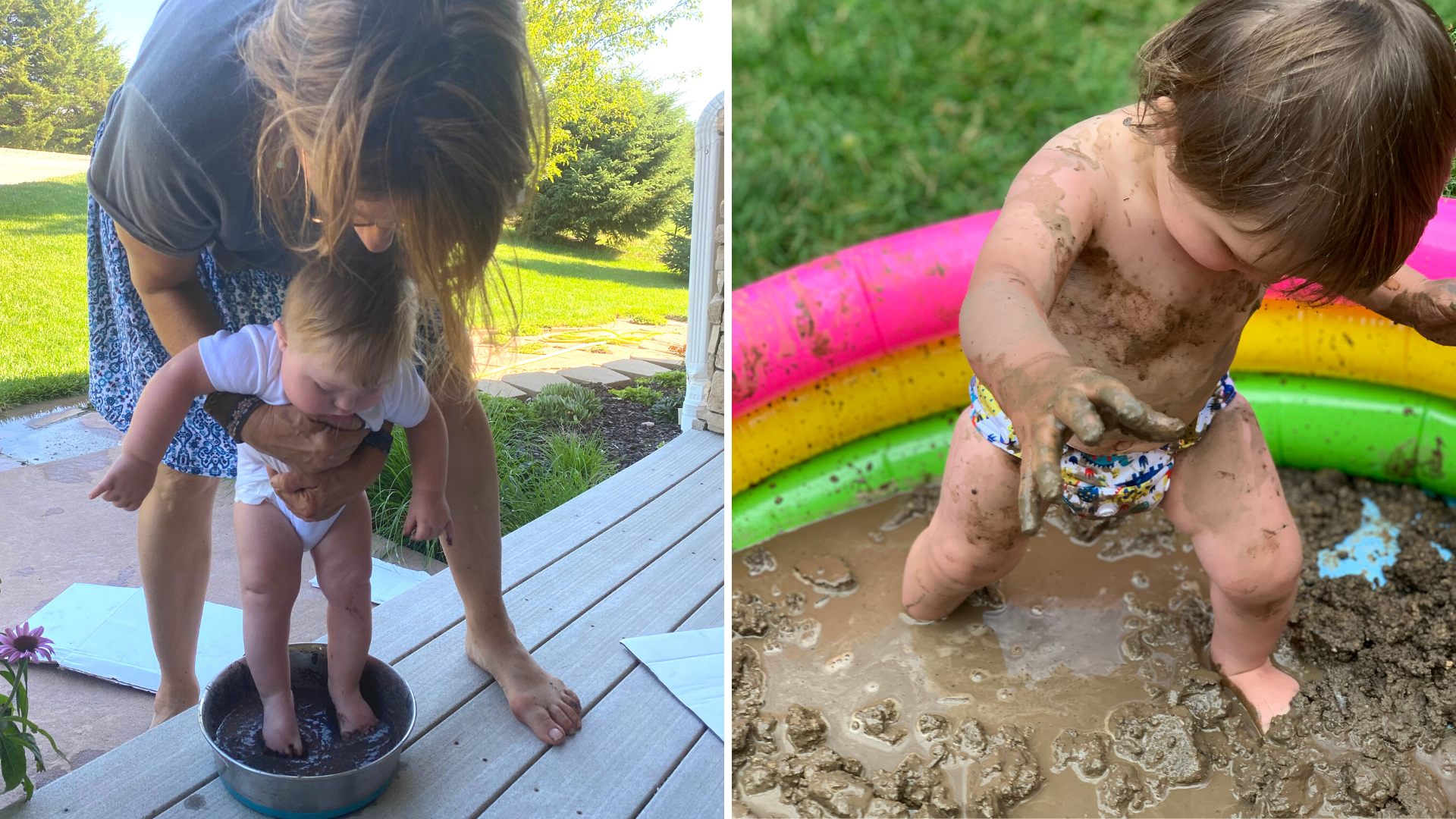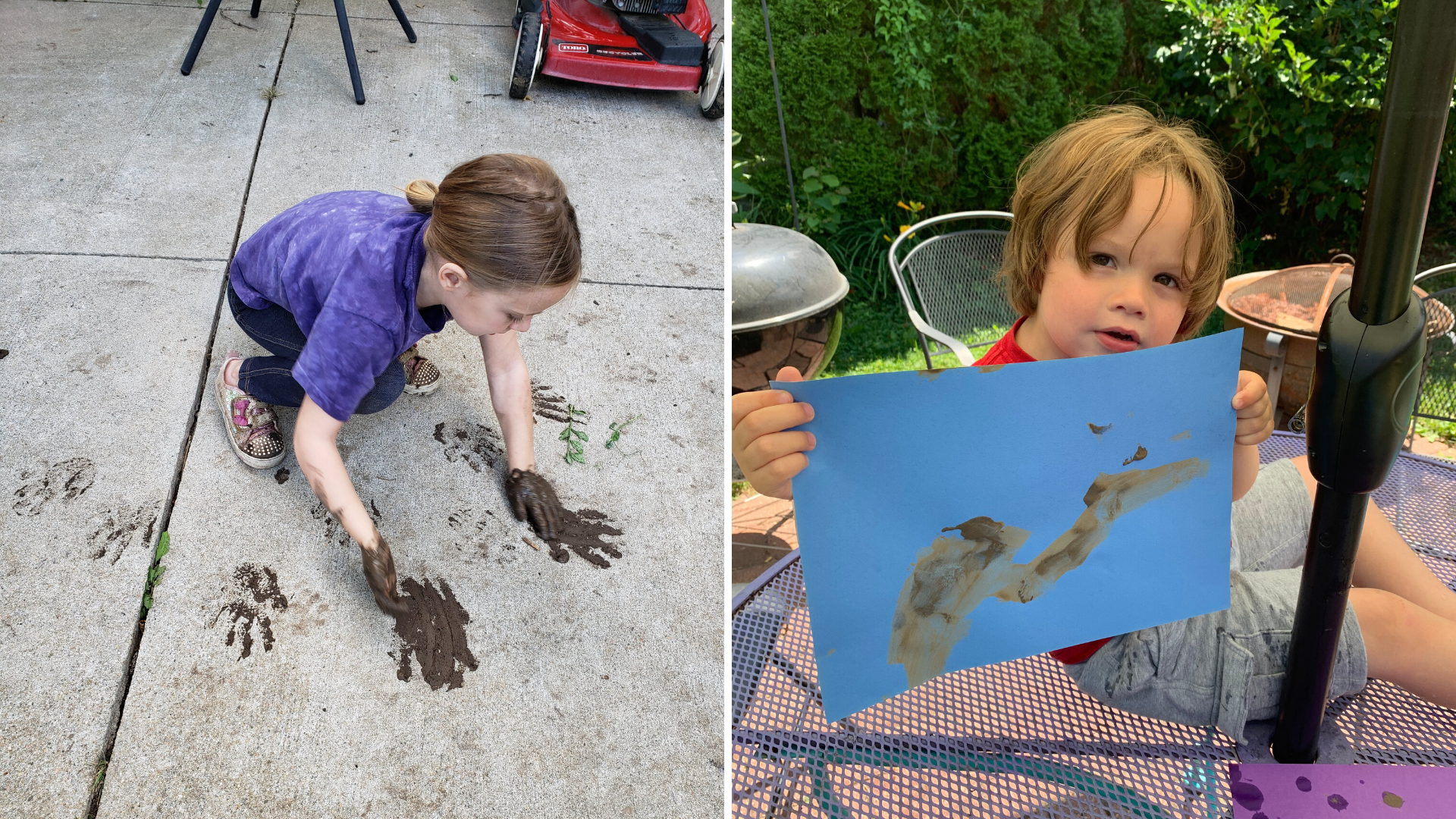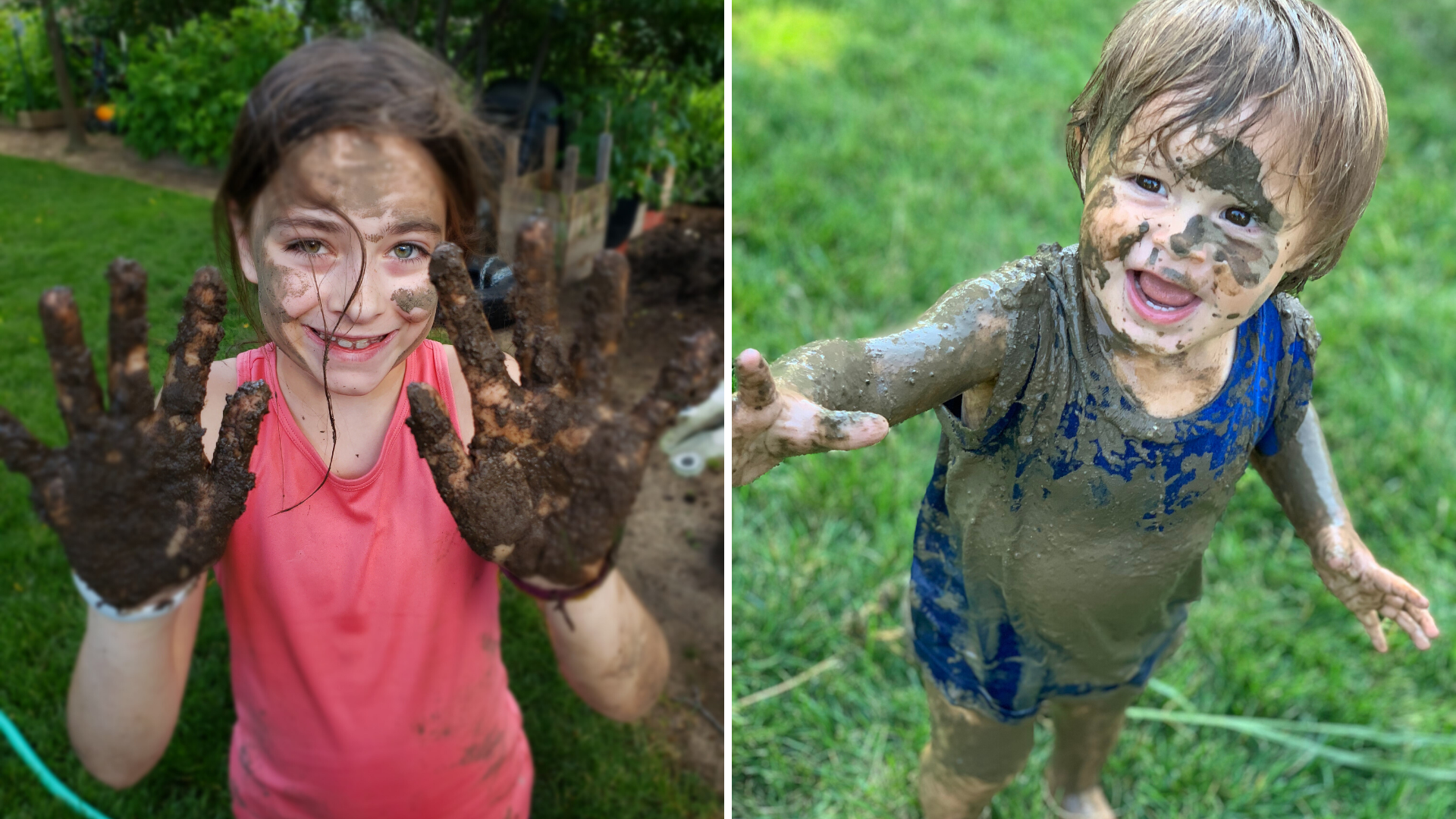
June 29 is International Mud Day! Join others around the globe in a day of splashing, rolling, squishing, sliding, making mud pies, and more!

You will learn that playing in the mud at any age is fun. You will also learn about the diversity and importance of soil.
Often we focus on the fact that mud is messy. But messes can be fun! And according to the National Wildlife Federation’s The Dirt on Dirt report, “Making direct contact with soil, whether through gardening, digging for worms, or making mud pies has been shown to improve mood, reduce anxiety, and facilitate learning.”
Mud is a mixture of soil and water. Soil is a mix of minerals, water, air, and organic matter (such as bacteria, plants, insects, and more.) Check out this video to learn more about soil.

- Mud
- Clothes that can get messy
- Energy and enthusiasm
- A bucket of water or a hose (for cleaning when you are done)

Although we encourage you to dive right into the mud and enjoy it fully, it is also possible to enjoy the mud without squishing right in. We have four activities listed below that encourage you to enjoy mud in all its splendor at a level of messiness that makes you feel comfortable.

Mud Tree Faces & Mud Pies
Who doesn't love a homemade mud pie? This activity is best done with mud made from soil with a high clay content.
What you need: natural items for decoration, a bowl or plastic lid
- Mix your soil and mud until you get a thick, moldable consistency, like a thick play-doh.
- Make a ball of mud and stick it onto a tree. Mold your mud to make a face. Or use an old bowl or the lid to a plastic container as a base for your mud pie.
- Use natural items such as sticks, flowers, grasses, and seeds to decorate your sculptures.
- Experiment with the level of water in your soil to change the consistency. Can you make more 3-dimensional art if it is wetter or dryer?

Squishy Toes
Yes, you really do have permission to play in the mud!
What you need: a kiddie pool or a large tub
- Fill the tub with a few inches of soil.
- Add enough water to make a squishy mud consistency.
- Take off your shoes and squish! Careful, it can get slippery!
- Use descriptor words to discuss sensory experiences from the mud.

Mud Painting
Use the soil in your backyard to make a mud painting!
What you need: small containers (one for each soil sample), paintbrush, spoon, paper or canvas
- Gather soil from several different places, you don’t have to travel far! Under a tree, in a flower bed, in a veggie bed - each of these will be slightly different types of soil. You only need a spoonful or two of each type of soil.
- Keep your soil samples separate. If you don't have a painting tray, you can use any small plastic bowl or container.
- Let your soil dry. Place it in the sun to dry it out faster.
- Use the back of a spoon or a mortar and pestle to crush your soil granules to make a powder.
- Mix your soil powder with water to make a watercolor “paint.”
- Use your paintbrush or hands to apply the mud to your paper or canvas and use your creativity to paint something realistic or abstract with your mud!

Mud Castles & Villages
Make a medieval mud castle! This activity is best done with mud made from soil with a high clay content.
What you need: a large tub, building and molding supplies such as cardboard, empty containers, spoons or forks, natural items for decoration
- Mix your soil and mud until you get a thick, moldable consistency, like a thick play-doh. You might need a lot - consider mixing it in a large tub.
- Mold your mud to make castles, bridges, moats, and more. You can make it right on the ground or use a piece of cardboard as a base. Use empty containers, such as yogurt cups, to make molds for towers and buildings. Try using old spoons or forks to carve detail into your buildings.
- Use natural items such as sticks, flowers, grasses, and seeds to help build your world.
- Grab some figurines, or make your own out of sticks or mud, and let your imagination run wild.

While you are doing the activities, encourage your kids to take a few minutes to examine the soil. It will engage them in learning while they play. Pose questions like:
- Rub the soil between your fingers - what do you feel?
- Examine it up close - what do you see?
- What does it smell like?
- Is there a difference between this mud and that mud?
- Why is mud (or soil) important?

- Check out the National Wildlife Federation’s report on the health benefits of playing in the dirt, "The Dirt on Dirt".
- The Soil Science Society of America explains “What is Soil?”
- Check out this video to learn more about soil and for a step by step tutorial on how to make mud paint.
- Check out this time-lapse video of worms composting yard waste and turning it into healthy castings to add to garden soil.


We would love to see where this lesson led you! Share your photos and videos with us by tagging #natureinyourneighborhood and #keepomahabeautiful.




